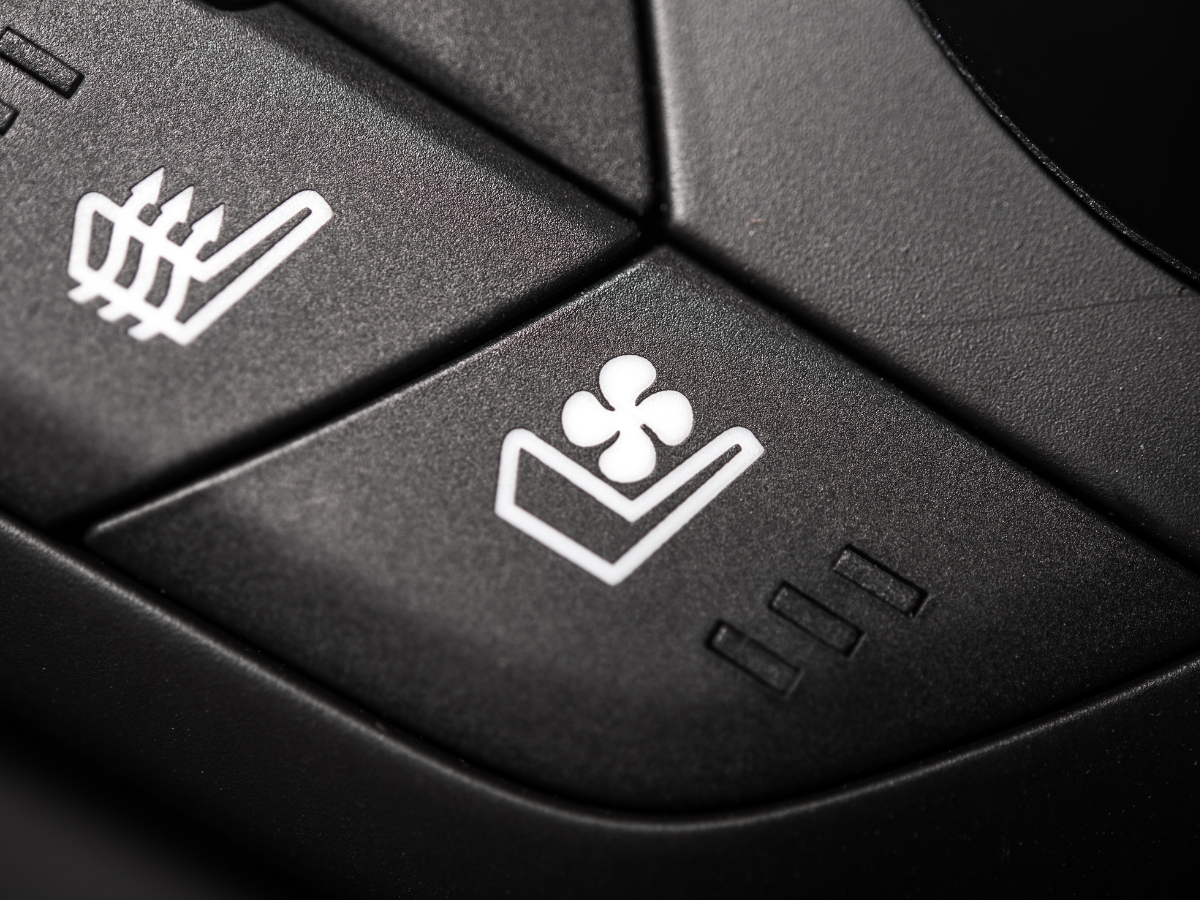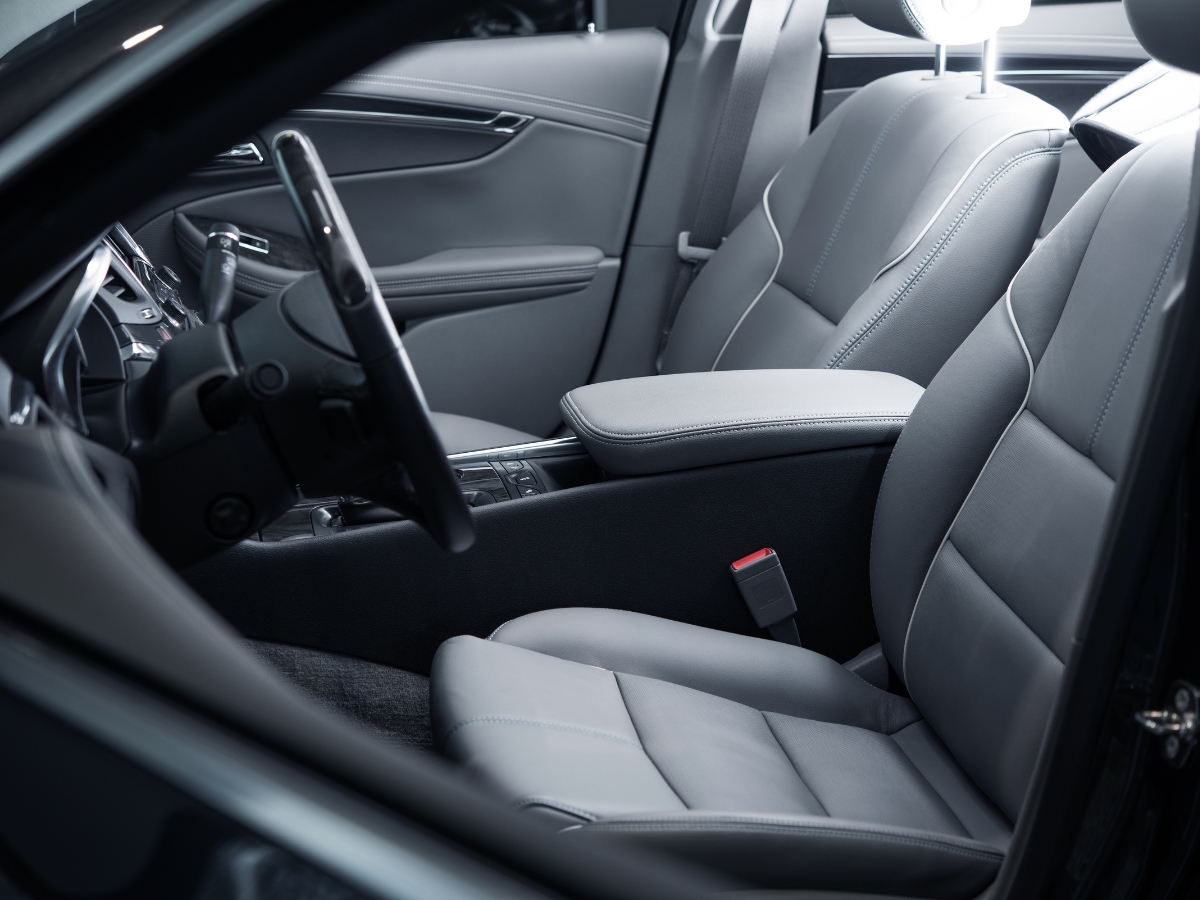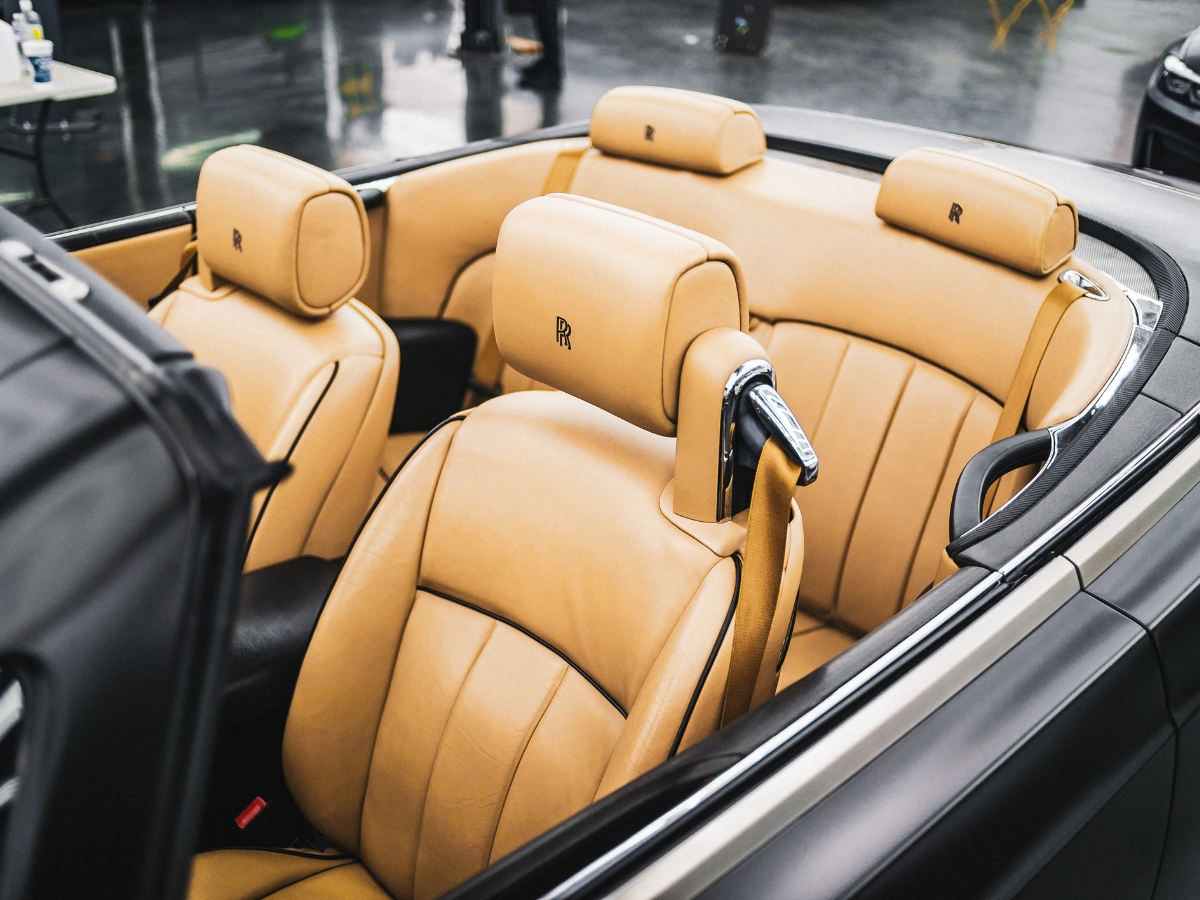Heated car seats have become popular in modern vehicles, providing added warmth and comfort during colder months. The power consumption of these seats is often a point of curiosity for drivers interested in their vehicle’s energy efficiency. Examining the power usage of heated seats can reveal valuable insights into the overall impact on a vehicle’s energy consumption and how drivers can effectively utilize this feature to maximize comfort.
This article explores the power usage of heated seats, how temperature and comfort levels may influence energy consumption, and the potential effect on battery life and fuel efficiency in electric and gas vehicles. By understanding the factors affecting power usage, vehicle owners can make informed decisions about the role of heated seats in their cars and optimize energy consumption while maintaining comfort.
Key Takeaways
- Heated seats typically use 40-50 watts of power per seat
- Power consumption depends on heating efficiency and outside temperature
- Balancing energy consumption and comfort can optimize heated seat usage

Power Consumption of Heated Seats
Heating System Efficiency
Heated seats are a popular feature in modern vehicles for providing comfort during cold weather. Energy consumption of heated seats greatly depends on their efficiency and the outside temperature. Generally, most electric vehicles require between 1 kW and 5 kW of power to use the heater. The more efficient the heater, the lesser power it will need. Similarly, colder outside temperatures necessitate higher power consumption to achieve a comfortable temperature.
Using heated seats to warm up proves to be much more efficient than running the cabin heater on high, as that results in 18-20 miles per hour reduction. It is suggested to use the heated seats for warming up while keeping the cabin heater on its lowest setting to ensure optimal energy consumption.
Impact on Vehicle’s Electrical System
The power consumption of heated seats has only a minimal impact on the vehicle’s electrical system. Since heated seats use significantly less power than the climate system, utilizing them over cabin heating takes less toll on the vehicle’s battery. In the case of aftermarket car heated seat installation, even deep cycle batteries with a 55Ah reserve capacity can sustain the additional power consumption without any significant negative effects.
Adequate battery reserve capacity ensures that the heated seats can be used for long hours without causing any issues or rapid drain on the car’s electrical system. Overall, implementing heated seats as a primary source of warmth during cold weather is a more energy-efficient and less taxing choice for vehicle’s electrical systems.
Temperature and Comfort
Heated seats are a popular feature in vehicles, especially during the winter months, as they provide additional warmth and comfort. These seats utilize an electric element to heat the seat’s interior, which is often faster and more efficient than solely relying on the venting system to circulate heated air. In many cases, these heated seats have thermostats that help regulate the temperature, ensuring a comfortable and consistent feeling for the occupant.
On colder days, heated seats can quickly warm up, providing a cozy environment for passengers and the driver. This can be particularly helpful when the vehicle’s main heating system takes longer to heat up the entire cabin. The thermostat plays a crucial role in maintaining a specific temperature by turning off the heating element when the seat reaches the desired warmth and turning it back on when the temperature drops. Some heated seats, however, may not have thermostats that automatically shut off, which could lead to excessive warmth or energy consumption.
The energy required for heated seats is relatively low compared to a vehicle’s entire venting system. Typically, one seat will require between 40 to 50 watts of power, which can be up to 12 times less power than a vehicle’s complete heating system. This low energy consumption allows heated seats to continue providing warmth without significantly impacting a vehicle’s fuel efficiency or electric vehicle range.
In conclusion, temperature and comfort are essential factors for drivers and passengers, especially during the winter season. Heated seats with integrated thermostats offer a convenient, energy-efficient solution to maintain warmth inside the vehicle. Although it is important to be aware of potential concerns with seats that lack automatic shut-off features, overall, heated seats contribute positively toward ensuring a comfortable and cozy driving experience.

Battery and Fuel Efficiency
Heated seats are considered a convenient feature in vehicles, particularly for drivers in colder climates. They can provide warmth and comfort while driving in harsh winter conditions. Despite their usefulness, many people wonder how using heated seats affects their vehicle’s battery and fuel efficiency.
When it comes to electric vehicles (EVs), heated seats are known to consume significantly less energy than the general climate control systems. According to GM Volt, heated seats require only about 40 to 50 watts per seat, which is 12 times less power than a typical heater consuming 5 kW. This reduced energy consumption can result in improved EV range without sacrificing passenger comfort.
For vehicles powered by gasoline, the use of heated seats has minimal impact on fuel economy. Heated seats obtain their power from the vehicle’s electrical system, which is supplied by the alternator. The alternator converts the mechanical energy generated by the engine into electrical energy for the vehicle’s battery and accessories. Since heated seats draw a relatively small amount of power, the additional load on the alternator is marginal, causing negligible changes in fuel consumption.
In summary, heated seats are energy-efficient and have minimal influence on battery and fuel efficiency in both electric and gasoline-powered vehicles. By prioritizing the use of heated seats over the overall climate control system, drivers can maintain a comfortable cabin temperature while also optimizing their vehicles’ energy consumption.
Factors Affecting Heated Seat Power Usage
When it comes to heated seat power usage, there are several factors that can affect the amount of energy required. The vehicle’s heating system and the seat heaters themselves play a crucial role in determining power consumption. Heated seats typically draw about 3-4 amps (about 40-50 watts) per seat, but the actual power usage can vary depending on specific conditions.
The efficiency of the heating element within the seat cushion is a key factor when it comes to energy consumption. Power requirements can vary between 1 kW to 5 kW depending on the efficiency of the heater and the ambient temperature. As the outside temperature drops, the heating element requires more energy to maintain a comfortable temperature.
External factors such as the use of headlights, windshield wipers, and defrosters can also impact power usage. These auxiliary systems draw power from the vehicle’s electrical system, which may result in added strain on the battery and alternator. When multiple systems are in use, the overall energy consumption might increase.
The vehicle’s heating system, specifically the vents and the interaction with the heated seats, also has an effect on power usage. For example, in electric vehicles, it is more efficient to use the seat heaters to warm up while setting the cabin heater at a low setting, as using the traditional heating system consumes more energy. This energy-saving strategy is particularly important for electric vehicles to preserve range.
Furthermore, allowing the engine to idle for an extended period to heat the vehicle or the seats can increase gasoline consumption and is generally not recommended. Long idle times could also lead to overheating of the heating elements, increasing the risk of burns for passengers.
In conclusion, various factors influence the power usage of heated seats in a vehicle. Some of these factors include the efficiency of the heating element, the interaction with the vehicle’s heating system, and additional auxiliary systems like headlights, defrosters, and windshield wipers. By managing the power usage effectively, drivers can maximize their vehicle’s overall efficiency and comfort during cold weather conditions.

Additional Comfort Features
In the realm of automotive luxury, there are several features beyond heated seats that enhance the driving experience, providing a comfortable and enjoyable ride. These include ventilated seats, heated steering wheels, seat warmers, air conditioning, and various types of upholstery.
Ventilated seats provide a pleasant environment during warm weather by circulating cool air through the seat cushions. This system is particularly beneficial in vehicles with leather seats, as they tend to retain heat and make occupants feel sweaty and uncomfortable. Ventilated seats, like seat warmers, use an electric system to provide cooling, which can be controlled by the driver or the passengers.
A heated steering wheel is another feature that ensures a comfortable grip in cold weather. Similar to seat warmers, it uses an electric heating element to warm the surface of the steering wheel while driving. This is a valuable addition as it enhances the driver’s comfort and helps maintain control of the vehicle during frigid conditions.
Air conditioning is essential in providing a comfortable cabin temperature, particularly during hot summers. Modern vehicles come equipped with advanced climate control systems that help maintain consistent temperatures inside the car. It is essential to keep your air conditioning system well-maintained as a properly functioning system ensures better fuel efficiency and a pleasant driving experience.
The weight of the vehicle may also play a role in the overall comfort level. Lighter cars are generally more energy-efficient, while those with a heavier weight might provide sturdier driving experiences. It is crucial to consider your personal preferences and needs when selecting the ideal balance between comfort and efficiency.
The choice of upholstery, such as leather or fabric, can also significantly impact the vehicle’s interior comfort. Leather seats are typically associated with luxury and offer a high-end feel, while fabric options may provide a more breathable and budget-friendly alternative.
By incorporating these additional comfort features, car manufacturers strive to create pleasant driving environments that cater to the varying preferences of their customers.
Reducing Energy Consumption
Heated seats are a desirable feature in a vehicle, as they can provide added comfort during cold months. However, their power draw can be a concern for environmentally-conscious drivers and automakers alike. In order to strike a balance between comfort and reducing energy consumption, it’s essential to consider several factors.
Firstly, the power draw of heated seats typically ranges between 1 kW and 5 kW, depending on the heater’s efficiency and external temperature conditions 1. Although this power usage is much lower than conventional climate control systems, it can still lead to increased emissions, especially for non-electric vehicles. Automakers can work on improving the efficiency of heated seats to minimize power draw and reduce emissions in their vehicles.
Another aspect to consider is the use of thicker engine fluids in colder weather. These thicker fluids make the engine work harder, resulting in greater fuel consumption and higher emissions. To mitigate this, drivers can opt for thinner engine fluids recommended for cold weather to reduce energy consumption.
In conjunction with heated seats and engine fluids, vehicle aerodynamics play a vital role in energy consumption. The presence of a roof rack can increase drag, which in turn leads to higher fuel consumption. Driver behaviors can also impact aerodynamics, such as maintaining proper tire pressure and minimal additional weight in the vehicle.
Furthermore, driving less and using alternative forms of transportation, such as taking public transit or carpooling, can reduce overall energy consumption and lower emissions as well. By adopting a combination of these strategies and prioritizing more energy-efficient features, both drivers and automakers can contribute to a sustainable and eco-friendly future.
Heated Seat Safety and Maintenance
Heated seats are a popular feature in many vehicles, especially during the colder months. They function by using a heating coil embedded within the seat cushion, which warms up when powered. To ensure the proper functioning and safety of heated seats, it is crucial to follow some basic maintenance guidelines.
One important aspect of heated seat safety is to avoid using aftermarket heating pads or seat covers that are not specifically designed for use with heated seats. These products can interfere with the heating coil’s operation and potentially lead to a fire hazard. If you have cooled seats in addition to heated ones, be extra careful when choosing seat covers, as they may affect both functionalities.
The electrical system of heated seats relies on fuses to protect the components from excessive current or voltage. Regularly inspecting and replacing fuses as needed will help ensure the safety and longevity of the heated seats. Be sure to consult your vehicle’s owner manual to find the correct fuse type and location.
In most cases, heated seats are powered directly from the vehicle’s electrical system, meaning they will only function when the car is running. This means that heated seats will generally turn off when the car is off, eliminating any unnecessary power consumption and potential safety hazards.
To maintain the effectiveness and safety of your heated seats, it’s essential to address any issues promptly. If you notice the seats are not heating evenly or are not functioning at all, it’s best to have a professional diagnose and repair the problem. This will ensure that your heated seats continue to provide the desired level of comfort while minimizing any risks associated with their operation.
In conclusion, by following these guidelines, you can enjoy the benefits of heated seats in your vehicle while keeping safety and maintenance in mind.
Specific Vehicles and Heated Seats
Heated seats are a popular feature in many modern vehicles, offering increased comfort during cold weather. The amount of power used by heated seats can vary depending on the vehicle and seat heater technology.
For instance, in a Tesla, seat heaters are considered significantly more energy efficient in comparison to the HVAC system. In electric vehicles, heated seats can use up to 12 times less energy than a climate system. This makes them an ideal choice for conserving energy in battery-operated cars.
In terms of other car manufacturers, the BMW 530i is a luxury sports sedan offering heated front seats among its standard features. While the power consumption of the heated seats in this specific model is not disclosed, it is essential to consider the fact that luxury cars often utilize high-quality materials and advanced technologies for their seat-warming systems, which could result in different power consumption levels compared to their non-luxury counterparts.
Another vehicle with heated seat options is the Hyundai Sonata, available in the SEL trim or the top Limited trim. While information on the power usage for the seat heaters in this car is not readily available, it is important to note that heated seats’ energy requirements may vary based on their construction, materials, and technology.
Concerning the ignition switch, this component is related to a vehicle’s electrical system that starts the engine, controls power distribution, and operates interior and exterior lights. While the ignition switch itself does not directly impact a vehicle’s seat heater power usage, it does play a role in controlling the flow of electricity throughout the car. As such, it is crucial to ensure a properly functioning ignition switch and electrical system for optimal heated seat performance.
In summary, each vehicle and heated seat system can differ in power consumption. Without specific information about every car model, it is difficult to provide an accurate comparison. However, it is clear that heated seats are a valuable feature, especially in electric vehicles like Tesla, where conserving energy is vital for extended driving range.
Frequently Asked Questions
How much energy do seat heaters consume?
Heated car seats typically draw about 3-4 amps, which is equivalent to around 40-50 watts per seat. The power consumption may vary slightly depending on the vehicle and the particular seat heating system installed.
What is the impact of heated seats on fuel efficiency?
While using heated seats can consume some additional fuel, the impact on overall fuel efficiency is minimal. A vehicle’s heating system usually uses the heat generated by the engine, so heated seats consume only a small amount of extra fuel. The difference is not likely to be significant for most drivers.
Can heated seats cause battery drainage?
Heated seats can draw power from the vehicle’s battery, but it’s generally not a major concern. The power consumption of heated seats is relatively low compared to other electrical systems in a car. However, if you run your heated seats for an extended period with the engine off, it could potentially put some strain on the battery.
Are there any drawbacks to using heated seats?
One potential concern with heated seats is the risk of overheating and even burns if the seat becomes too hot or if there is a malfunction in the heating system. To minimize this risk, it’s important to use the settings on your heated seats appropriately and not leave them on high heat for extended periods.
Another potential drawback is the added cost of installation and maintenance if you choose to have aftermarket heated seats installed in your vehicle. Professional installation can cost between $300 to $500 per seat.
What factors affect the power usage of heated seats?
The power usage of heated seats can be influenced by factors such as the ambient temperature, the seating material, and the specific model of seat heater installed. Lower outside temperatures may cause the heaters to use more power to maintain comfort, while the type of seat material could impact how efficiently heat is absorbed and distributed.
How do heated seats compare to other power-consuming features?
Compared to other power-consuming features in a car, heated seats use relatively little energy. For example, heated seats can use up to 12 times less energy than a climate control system in an electric vehicle. Therefore, their power consumption is generally not a major concern when considering the overall energy use of a vehicle.




